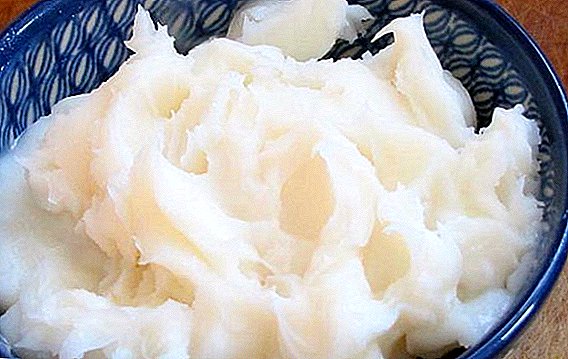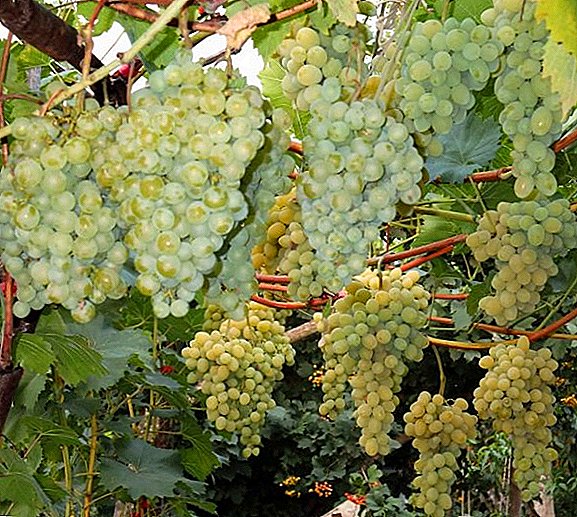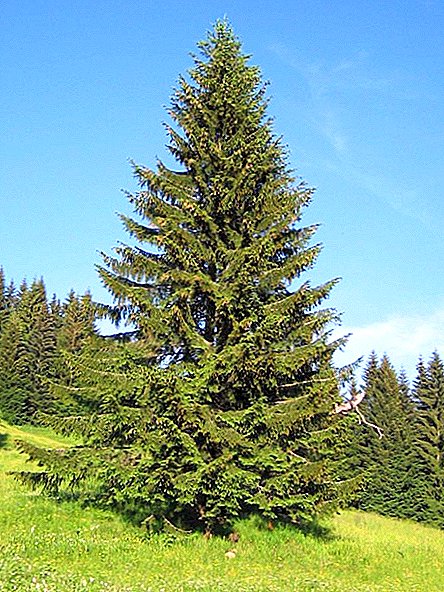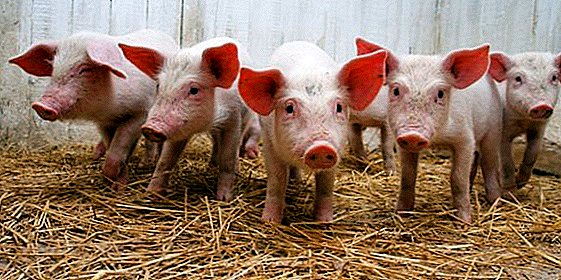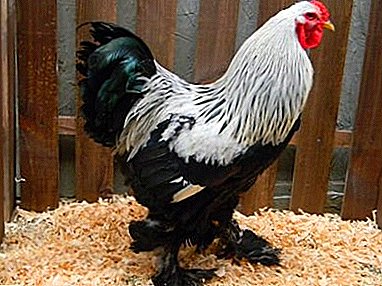
Chickens Brama are one of the most popular meat and egg breeds. Birds have a large size and expressive appearance.
Among the advantages of the form - good health and ease of maintenance. Brama will not bring troubles and difficulties in breeding even to a beginner farmer.
What are the features of the subspecies black Brahma? We find out the main facts.
The appearance of the species
Brahma originated from the interbreeding of the Kochinquin and Malayan hen.. The standard of the Black (dark) Brama breed was established as early as 1874. Initially, the breeders had a goal - the removal of large and unpretentious individuals to the conditions of detention.
 Black Brama was planned as a meat breed, but later productivity gave way to the exterior.
Black Brama was planned as a meat breed, but later productivity gave way to the exterior.
Later the breed is divided into 3 branches:
- European;
- American;
- Asian
Black Brama is spread on the farmsteads of the whole world. Individuals serve as decoration of the bird's yard, pleasing the eye with an original look.
Breed signs
Among the distinguishing features of domestic chickens - a magnificent posture, which is formed due to the fleshy body, highly placed body and thick sternum. The crest is small, there are no scars on it.It is shaped like a pod.
The dark Brahma is distinguished by its elongated neck, small head and bulging frontal lobes. Bill is yellow with black stripes. Eyes of a reddish-brown shade. The tail is set straight, the paws are high and steady.
Features
The head and neck of the subspecies has a silvery-white shade.. The tail of the hens is rich black in color, with a clear pattern on the body. Roosters are noticeably darker, they are dominated by black feathers with a greenish tint. Marriage subspecies - the presence on the plumage of a reddish hue.
Color
 The main differences between the species are specific color.
The main differences between the species are specific color.
White breed and black collar are peculiar to light breed, partridge hens have triple edging of feathers (combination of black and gray shades).
The color of the fawn subspecies depends on the gender of the individual.: differences in color and fluffiness of feathers.
A short video where you can visually see what the representatives of this breed look like:
Weight and egg production
Representatives of the Black Bram subspecies are a bit smaller than bright individuals: hens up to 3.7 kg, roosters up to 5 kg. Layers produce up to 150 eggs per year.. The weight of 1 egg is 55-65 g. The shell has a light cream shade. Egg production persists in cold climates. The level of preservation of chickens to 65%, adult birds - 80%.
Advantages and disadvantages of chickens
Black Brama is unpretentious to the conditions of detention. Individuals show high reproduction rates at low temperatures.
Among other advantages of the subspecies:
- non-conflict nature (easy to get along with another bird);
- good egg production;
- hen instinct;
- lack of space for large walking.
Are there any disadvantages? Among the main disadvantages are the slow growth of chickens (evaporation should be carried out no later than June) and late egg production (from 8 months).
Maintenance and care
 To preserve the purity of the breed is not recommended to keep individuals with other chickens. The alternative is individual farms or small farms.
To preserve the purity of the breed is not recommended to keep individuals with other chickens. The alternative is individual farms or small farms.
For the comfort of the birds it is important to ensure constant cleanliness and dryness in the hen house. The floor should be wooden, smooth and large.
Necessarily arranging the house with perches, feeders, drinking bowls and nests. When installing, you must take into account the size of individuals (perch is not less than 30 cm wide and 40 cm from the floor). Sunlight should freely enter the room; it is important to protect the coop from drafts.
Important! To prevent egg production from slowing down in winter, artificial lighting should be done in the house (keep the day length up to 12-13 hours).
Feeding
The basic rule of feeding is the established mode.. In the morning should be given zernosmes, after lunch - wet mash, in the evening - whole grains.
For the active growth of young stock, it is allowed to add 10% feed to the grain. Feeders need to be installed a little higher than the chicken sternum so that the feed does not pour by.
For roosters and hens, it is advisable to equip different feeders and fence them with mesh.
A photo
The photo shows the Black Dwarf:



Breeding specifics
Ways of breeding subspecies Dark Brama:
- incubator;
- buying young stock;
- acquisition of breeding individuals;
- self selection.
The latter option implies a compulsory diet for the hen, as due to the large weight the chicken will crush most eggs.
Attention! Eggs from layers 1 year old are not suitable for breeding. Peculiarities of the breed appear from the second year of life. The best option is three year old chickens.
To make the chicken stronger before winter, he needs to be born no later than June. Kids hatch yellow, but on the second day the characteristic color is already manifested. Up to 6 months youngsters should be kept separately.by giving them a balanced feed for active growth.
Black Brama is large, beautiful and majestic birds that will decorate any compound. The main rule in their removal and maintenance - ensuring cleanliness and optimal diet.


